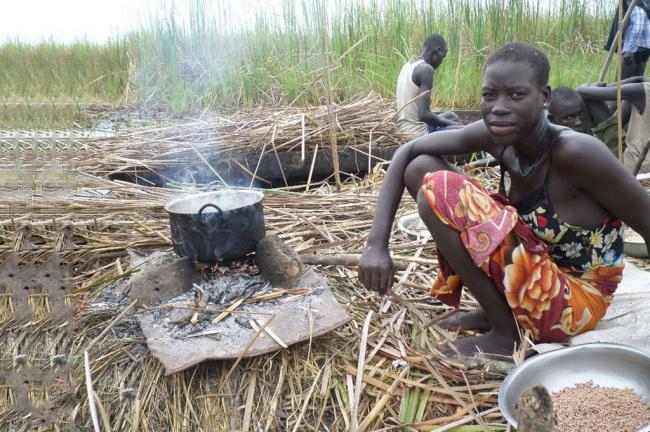
Food gap widens in conflict-stricken South Sudan – UN assessment
Cereal prices have shot up nearly five-fold since early last year, making it increasingly difficult for people to get enough to eat, according to a new joint Crop and Food Security Assessment Mission report by the Food and Agriculture Organization (FAO) and the World Food Programme (WFP).
The crisis in South Sudan is marked by alarming levels of hunger. Some 5.8 million people, or nearly half of the country's population, are unsure where their next meal will come from, while the rate of severe food insecurity has now reached 12 percent, double the rate of one year ago.
“This report makes it clear that improving the food situation requires a peaceful resolution to the conflict,” said WFP Country Director Joyce Luma, noting that South Sudan is facing a “deadly blend of conflict, economic hardship and poor rains,” which together are worsening a hunger gap that might force more people to go hungry and increase malnutrition.
Production failure, markets paralysis
FAO Country Representative Serge Tissot said that links between cereal-producing areas – mostly in the Equatoria and Bahr el-Ghazal states – and main markets have become extremely difficult due to heightened insecurity, a proliferation of roadblocks and exorbitant ad hoc taxes levied on commercial transporters along major trade routes.
Even though more than 90 per cent of South Sudan's land is arable - huge potential for agricultural production, just 4.5 per cent of available land was under cultivation when the country gained independence in 2011.
Now, after over two years of civil war, this percentage has significantly decreased due to widespread insecurity, damage to agricultural assets and limitations in traditional farming methods, Tissot said.
“Yet crop production is possible in the stable areas within conflict-affected states, and is more important than ever. Communities cannot rely on markets or aid deliveries for food, and therefore need to produce on their own,” he added. “FAO is working with farmers, fishers and herders, providing them with emergency livelihood kits, seeds, tools, animal health support and training.”
Recommendations to bridge the food gap
The report makes a series of recommendations for immediate action to address hunger, strengthen domestic food production and reduce the food gap in 2016 and into next year.
Most urgent is the need for an immediate improvement of security across the country. In addition, agencies like WFP, FAO and partner organizations need sustained access and resources to provide targeted food and livelihood assistance to the very vulnerable households in areas with the highest levels of food insecurity, especially in parts of Greater Upper Nile and Eastern Equatoria.
Where appropriate, provision of livelihoods assistance – such as seeds or tools – that allow communities to produce their own food is required to withstand market disruptions. Improving people's access to micronutrient- and protein-rich food could be achieved through the distribution of fishing kits and use of nutrition vouchers to be traded for locally sourced vegetables, fish and milk.
Other recommendations include: supporting the 2016 cropping season across all of South Sudan by ensuring access to agricultural and fisheries inputs; strengthening farmer and pastoral field schools; expanding veterinary campaigns aimed at keeping people's livestock healthy; and, in conflict-affected areas, assisting in re-establishing livelihoods whenever possible by helping in land preparation and access to inputs.
Funding shortfalls
Under the 2016 Humanitarian Appeal, FAO appealed for $45 million to assist 2.8 million people with seeds, tools and other inputs to produce food and keep their livestock healthy, and strengthen the Government's efforts to boost food security. The current funding gap is 16.1 million to meet this goal.
WFP plans to provide food assistance and specialized nutrition support for about 3 million people in South Sudan in 2016, but has a funding gap of 241 million for the next six months.
Photo: FAO South Sudan
Support Our Journalism
We cannot do without you.. your contribution supports unbiased journalism
IBNS is not driven by any ism- not wokeism, not racism, not skewed secularism, not hyper right-wing or left liberal ideals, nor by any hardline religious beliefs or hyper nationalism. We want to serve you good old objective news, as they are. We do not judge or preach. We let people decide for themselves. We only try to present factual and well-sourced news.







